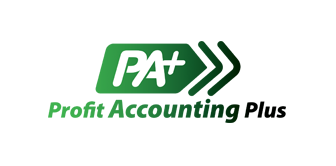As the looming “fiscal cliff” dominates the post-election news cycle, it’s hard to know what tax and financial moves make sense this time of year. Pundits are talking in circles, and experts don’t possess a crystal ball. In this environment, it’s understandable that startups and self-employed professionals are confused about the next steps.
However, when it comes to tax planning, paralysis isn’t an option. Here are seven tax-saving ideas to consider before the calendar flips to 2013. Of course, these tips represent general advice — you should always consult with a tax planner/CPA for insight into your own personal situation.
1. Assess Your Profitability
Before making any strategic moves, you need to know if you’ll be in the black or the red for 2012. If you haven’t done so already, take charge of your books to get a full picture of what you’ve made and what you’ve spent for 2012.
2. Meet With a Tax Advisor
Many tax credits and incentives are set to expire Jan. 1, 2013. According to Bert Seither, director of operations at Corporate Tax Network, the top thing a startup can do between now and the end of the year is to schedule an appointment with an accountant.
“You can either turn a cold shoulder and let things happen to you, or you can speak to your accountant about how the changes will affect your financial situation,” says Seither. “A 30-minute checkup can save you a lot of money come tax time.”
3. Upgrade Your Equipment
Section 179 of the tax code lets businesses deduct the full purchase price of qualifying equipment/software that was purchased during the tax year. If you buy qualifying software or equipment, you can deduct the full purchase price from your gross income.
The 2012 deduction limit is $139,000, and the limit on equipment purchases is $560,000 (this is the maximum amount that can be spent on equipment before the Section 179 deduction begins to be reduced).
Unless Congress takes action, the maximum Section 179 deduction for tax years beginning in 2013 will be $25,000, and the threshold will be $200,000. The bottom line? If your business is thinking about upgrading any equipment in excess of $25,000 (from computers to servers and software), think about making those purchases in 2012, while you can still take advantage of this year’s limits.
However, keep in mind that this applies only to those companies that will report a profit in 2012. You’re not allowed to take a Section 179 deduction that creates or increases a tax loss.
4. Act Before Long-Term Capital Gains and Qualified Dividend Tax Rates Increase
Without congressional action, the maximum tax rate on long-term capital gains will increase from 15% to 20%. The maximum tax rates for qualified dividends will jump from 15% to the ordinary income tax rate (39.6%). For this reason, you should talk to a tax advisor about how to take advantage of 2012’s lower tax rates, such as:
- Sell any stock, partnership interests and LLC membership interests
- Distribute any C Corporation earnings and profit
- Distribute S Corporation earnings
5. Act Quickly to Close and Liquidate Your Business
If you’re planning to liquidate a business, make sure to do so by the end of 2012. By closing your business this year, you won’t be on the hook for any taxes, business licenses or corporation filing fees for 2013. And most importantly, you’ll be liquidating your business before the long-term capital gain and dividend rates go up (or are scheduled to go up) in 2013.
6. Minimize Self-Employment Taxes
If you’re a self-employed pro operating as a sole proprietor, you’re probably very familiar with self-employment taxes. If you’re a sole proprietor, you may want to consider a more formal structure such as an LLC or corporation by the end of the year. Sole proprietorships can have one of the highest audit rates, not to mention some of the highest taxes. Forming an LLC or corporation can give you more flexibility with your tax treatment, as well as give you more deduction options. Talk to a tax advisor about creating a C Corporation, S Corporation or LLC.
7. Plan for Retirement
If you’re a self-employed entrepreneur, you need to take responsibility for your retirement. If you haven’t done so already, take time to set up a retirement plan or reassess your contributions. Sign the paperwork with a financial institution by Dec. 31, 2012 to create the plan; you have until the extended due date of the 2012 income tax return to make tax-deductible contributions.
Contributing to an IRA, Keogh, simplified employee pension (SEP) or other retirement plan is an essential way to plan for your future and reduce your taxable income. The specific rules, contribution limits and deadlines vary by plan. Make an appointment with your CPA to discuss the best retirement option for your business.
Keep in mind that tax planning is an ongoing process. As Seither explains, “The once-a-year approach of reactive preparation will keep you on the up and up, but proactive tax planning will ensure you’re taking advantage of every tax deduction and business incentive that’s offered from the IRS.”
And that’s more important now than ever, with all the moving parts of the U.S. tax code.
